by Prudence Caskey | Jul 25, 2024
The origins of county fairs can be traced back to the late 18th and early 19th centuries. The first recognized county fair was held in 1811 in Berkshire County, Pittsfield, Massachusetts. The Berkshire County Fair exhibited produce, livestock, and other agricultural commodities. Throughout the 19th century, the popularity of county fairs spread across the agricultural communities in America. The fostering of community spirit and camaraderie. County fairs’ economic impact has benefited local communities, with exhibitors traveling into town to showcase their wares. Fairs were about more than rides and funnel cakes initially. It wasn’t until 1893 when George Ferris invented and showcased the Ferris wheel at the Chicago World Fair, that rides became part of fairs. But are fairs really still relevant today?
Fairs are a place where youth can demonstrate the knowledge and skills they have developed through their project work in 4-H. There are three ways youth can do this at a fair: 1. Exhibit non-animal project work, 2. Exhibit an animal they have raised, and 3. participate in a judging contest.
Exhibiting Non-Animal Project Work– Exhibiting what you learned in your project is a culminating experience for 4-Hers. Youth can exhibit plants they have grown, preserved foods, things they have sewn or crafted, or photos or posters about their projects. Adult exhibitors sometimes enter a separate competition by showcasing quilts and baked goods or bringing in their prized roses. As fairs grew, many businesses decided to showcase their new products. Early fairs were the place to find the newfangled washing machine, refrigerator, or even a new tractor!
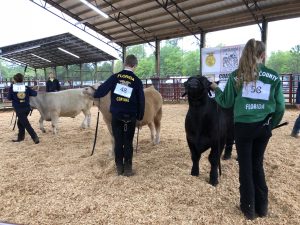 Exhibiting Animals– Raising a livestock project can be a valuable source of life lessons and teachable moments, even though many people may not initially consider it as such. A 4-H member is making a serious commitment when they sign up for a livestock project. A commitment to their parents or grandparents who helped purchase the animal. They must be committed to completing the project and the record book. Mostly, that child is seriously committed to the animal they are raising.
Exhibiting Animals– Raising a livestock project can be a valuable source of life lessons and teachable moments, even though many people may not initially consider it as such. A 4-H member is making a serious commitment when they sign up for a livestock project. A commitment to their parents or grandparents who helped purchase the animal. They must be committed to completing the project and the record book. Mostly, that child is seriously committed to the animal they are raising.
Youth can learn much from a livestock project—confidence, responsibility, empathy, goal setting, financial responsibility, and sportsmanship. Livestock projects at county fairs can range from raising a bantam chicken to raising a 1,200-pound steer. Each project can teach youth valuable life skills. In 1952, E.B. White published a book about youth raising livestock for the county fair called “Charlotte’s Web.” In the story, the little girl raises a pig for the county fair, growing up alongside the pig, Wilber. It is highly recommended if you have not read the book or seen either of the movies.
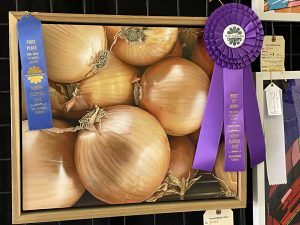 Competing in Contests– Most fairs offer subject matter specific contests where youth can demonstrate their project knowledge. In the Florida Panhandle, there are contests for Horticulture Judging, Wildlife Ecology, Sewing, Consumer Choices, Science, Technology, Engineering, and Math (STEM), and Agriculture. During these contests, youth use what they have learned to problem solve, communicate, and work as a team. Next time you hear the fair is in town, enjoy the corn dogs and cotton candy, but remember the exhibit hall. You may run into a 4-H club member caring for their animal or watering their plants in the horticulture exhibit.
Competing in Contests– Most fairs offer subject matter specific contests where youth can demonstrate their project knowledge. In the Florida Panhandle, there are contests for Horticulture Judging, Wildlife Ecology, Sewing, Consumer Choices, Science, Technology, Engineering, and Math (STEM), and Agriculture. During these contests, youth use what they have learned to problem solve, communicate, and work as a team. Next time you hear the fair is in town, enjoy the corn dogs and cotton candy, but remember the exhibit hall. You may run into a 4-H club member caring for their animal or watering their plants in the horticulture exhibit.
For more information on 4-H, please contact your local 4-H office. You can find your local office here.
https://nwdistrict.ifas.ufl.edu/4hn/2021/03/04/meet-the-author-prudence-caskey/
Prudence Caskey, Santa Rosa County 4-H Agent II
by Heather Kent | Oct 12, 2023
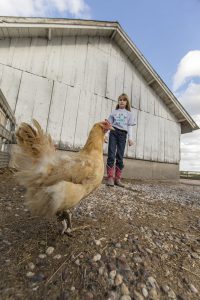 Because of our mild weather in Florida, nearly every season is fair season! County, regional, and state fairs occur throughout the fall, winter, and spring in our sunshine state. However, most county and regional fairs in the panhandle are in the fall. Fairs are an important component of the project experience. They provide opportunities for youth to demonstrate their project knowledge and skills. Livestock shows, judging contests, and exhibits are three ways youth are encouraged to develop communication and problem-solving skills associated with their project. To help our families prepare for the fair season, we have curated several resources:
Because of our mild weather in Florida, nearly every season is fair season! County, regional, and state fairs occur throughout the fall, winter, and spring in our sunshine state. However, most county and regional fairs in the panhandle are in the fall. Fairs are an important component of the project experience. They provide opportunities for youth to demonstrate their project knowledge and skills. Livestock shows, judging contests, and exhibits are three ways youth are encouraged to develop communication and problem-solving skills associated with their project. To help our families prepare for the fair season, we have curated several resources:
Livestock Shows- if you are new to livestock shows, you may feel a little overwhelmed. This article has some very helpful tips on making sure you are prepared- whether you are showing a large animal (such as a steer) or a small animal (such as a rabbit). The article also includes a downloadable packing list, as well as a list of supplies you may want to have on hand for a “show box.” A show box is a container where you store all of your show supplies.
Judging Contests– Juding contests help youth develop critical thinking skills. Fairs typically offer a variety of judging contests- from agriculture, livestock, poultry, horticulture, and even consumer choices. If you want to learn the basics of judging contests, check out this article and video. If you are interested in agriculture or livestock judging, check out this article for a list of free, downloadable resources and local judigng opportunities.
Exhibits– Fairs are a great way to show off what you have done throughout the 4-H year. From individual project exhibits to club booth exhibits, there is something for everyone. Check out our family guide to fair exhibits to know which types of exhibits are right for you! If you plan to submit exhibits to the North Florida Fair in Tallahassee, be sure to read this article which is a step-by-step guide to prepare your exhibits for that blue ribbon premium!
something for everyone. Check out our family guide to fair exhibits to know which types of exhibits are right for you! If you plan to submit exhibits to the North Florida Fair in Tallahassee, be sure to read this article which is a step-by-step guide to prepare your exhibits for that blue ribbon premium!
4-H Days at the Fair– most fairs offer a special day just for 4-H families. On this day, entrance into the fair is usually free for 4-Hers and features several judging contests and events to support 4-H project work. 4-H Day at the North Florida Fair is November 12th. Check out this article with tips and information you need to know before you go to 4-H day.
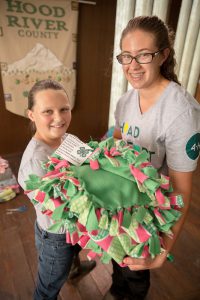 For more information about fairs in your area, or to help youth in your county make the most of thier local fair, contact your local UF IFAS County Extension Office.
For more information about fairs in your area, or to help youth in your county make the most of thier local fair, contact your local UF IFAS County Extension Office.
by Jena Gilmore | Sep 7, 2018
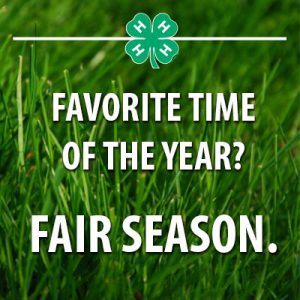
It’s that time of year again – Fair Season!
I can just smell the delicious scents of midway foods and see and hear the lights and squeals on carnival rides? But to most 4-H families, fairs go way beyond food and rides. During fair season, youth throughout the state dress up with pride in their 4-H green attire and prepare for what’s to come…fair exhibits!
Fair exhibits can range from artwork to plants to animals and finally, the epic fair booths. The most important thing for youth and adult exhibitors is knowing:
1. What counties are allowed to participate?
2. What and how many categories you may enter?
3. Exhibit requirements.
Here, we’ll cover preparing for fair booths and animal exhibits but you can find multiple links below for the state and local fairs with more information on exhibit entries and requirements.
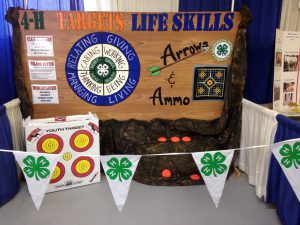
Fair booths are the highlight of displays at the fair
Organizations, like 4-H, use fair booths to visually communicate what we offer. Fair booths can be a great way to create a sense of Belonging in your club by having all members feel like they’re part of the 4-H Family! You want your communication to be effective, so prepare a checklist:
- Research the fair you want to enter – determine the deadline and registration requirements.
- Will you earn a booth premium? If so, figure out how much your club is willing to spend on supplies based on the premium could receive.
- Determine the size of your booth. Going out of booth boundaries can be a point deficit on the scorecard.
- Pick your booth theme and layout.
- Get commitments from members and parents to help with preparation, setup and breakdown. Delegate tasks so everyone feels like they have contributed.
Check out “Exhibits and Displays” below for a full checklist and more information!
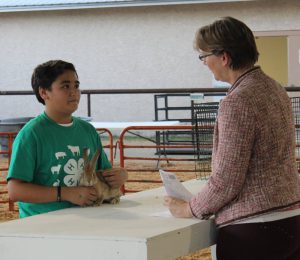
4-H’er talking to the judge of the Rabbit Show at Walton County Fair.
4-H Animal Exhibits
Rabbit, chicken, cattle, swine and goat exhibits are staples of fair week. Animal exhibits give many people the opportunity to see, learn about and interact with animals they don’t normally come across. For our 4-H youth, livestock exhibits and shows give youth the ability to gain Mastery through 4-H Project Learning. These highly experiential experiences teach youth a multitude of life skills. To get your animals fair ready:
- Research the fair’s deadlines and registration. Be sure to check deadlines for acquiring ownership and birth-dates of your animals.
- Check the vaccination and health certificate requirements for your animal and secure an appointment with a veterinarian to have this completed.
- Be on time or early to check-in. Sometimes, there is only one Agriculture Inspector and a long line of exhibitors. Some animals are required to do on-site blood testing, so be prepared with your paperwork and be patient.
- Determine if the fair provides the food and bedding and if exhibitors are required to care for their animals daily. This is not only important for the nutritional well-being of your animal but also for their emotional well-being.
Helpful Links:
Florida Panhandle Fair Opportunities:
- Escambia- Pensacola Interstate Fair (also open to Santa Rosa and Okaloosa counties)
- Okaloosa- Northwest Florida Fair (also open to Escambia and Okaloosa counties)
- Santa Rosa- Santa Rosa County Fair (open to all counties in the Northwest District)
- Walton- Walton County Fair (open to Walton and Okaloosa counties)
- Holmes- Holmes County 4-H Youth Fair
- Washington- Washington County Youth Fair (Beef and swine livestock shows are also open to Holmes and Bay counties)
- Jackson- Panhandle Youth Expo (also open to Walton, Washington, Calhoun, Holmes, Liberty, and Bay counties)
- Bay- Central Panhandle Fair
- Calhoun- no county fair, but eligible to participate in regional and state fairs
- Gulf- no county fair, but eligible to participate in regional and state fairs
- Liberty- no county fair, but eligible to participate in regional and state fairs
- Gadsden- West Florida Livestock Show and Sale (open to counties west of the Suwanee River)
- Franklin- no county fair, but eligible to participate in regional and state fairs
- Wakulla- no county fair, but eligible to participate in regional and state fairs.
- Leon- http://northfloridafair.com/
- Jefferson- no county fair, but eligible to participate in regional and state fairs
If you’re a fair veteran, 4-H alumni, or just someone interested in benefiting the youth of your community, contact your local UF/IFAS County Extension Office to find out how you can become a 4-H Volunteer and share your expertise!
by pmdavis | Oct 2, 2017
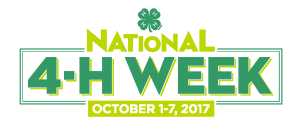 October is an exciting month for 4-H – we have some great things happening. First, it includes National 4 H Week, October 1-7. This year during National 4-H Week, The Northwest district is proud to celebrate the #TrueLeaders that make our community great. Every child deserves to be recognized for the great things they are doing. Help us celebrate #TrueLeaders during National 4-H Week by shouting out your favorite 4-H’er. #TrueLeaders lead by example, empowering their peers and inspiring communities. 4-H’ers, show your pride this National 4-H Week! Share photos of how youth are stepping up as #TrueLeaders in your county.
October is an exciting month for 4-H – we have some great things happening. First, it includes National 4 H Week, October 1-7. This year during National 4-H Week, The Northwest district is proud to celebrate the #TrueLeaders that make our community great. Every child deserves to be recognized for the great things they are doing. Help us celebrate #TrueLeaders during National 4-H Week by shouting out your favorite 4-H’er. #TrueLeaders lead by example, empowering their peers and inspiring communities. 4-H’ers, show your pride this National 4-H Week! Share photos of how youth are stepping up as #TrueLeaders in your county.
As part of National 4-H Week, 4-H’ers participate in 4 H National Youth Science Day (NYSD), the world’s largest youth-led science experiment. This year’s 4 H NYSD event will take place on October 4.
Our local Tractor Supply Company will be supporting 4-H clubs October 4-15 with their Paper Clover Campaign, this is a national in-store fundraiser that benefits state and local 4-H programs. Tractor Supply invites friends and family to support 4-H by donating $1 at store checkouts for scholarships that send local kids to 4-H camp and other 4-H leadership experiences.
October also represent a time when our local tailgating youth will advance to the state finals. The northwest district will have 8 youth advancing to the state competition October 14.
October also means that it is fair time! You will be able to view our 2017 4-H youth exhibits across the Panhandle at local fairs and rodeos!
Central Panhandle Fair – October 2 -7
Art in the Garden Festival at the UF IFAS Research Center in Quincy- October 7th
Bonifay Rodeo – October 5-7
Walton County Fair – October 9-14
Panhandle Youth Expo– October 11th-14th
Pensacola Interstate Fair – October 19-24
North Florida Fair – November 2-12
Local 4-H youth will exhibit their artwork, plants and animals that they have been caring for this past year. Youth exhibits and plants are judged. Youth receive ribbon awards using the Danish judging system at county and regional fairs. This means that exhibits are judged against a “standard” rather than against other exhibits. For example, a painting that has been created by a 4-H’er is not compared to other paintings. Rather, it is judged according to the criteria of standards for paintings. A blue ribbon means that the exhibit meets high standards and good quality work is shown.
October and November are busy months in 4-H. To find out more information about other 4-H programs like this or volunteer your time to work with youth, contact your local UF IFAS County Extension Office or visit http://florida4h.org.
by Monica Brinkley | Apr 14, 2017
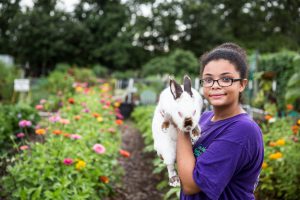
Rabbits are a popular small animal project- but is it a good fit for your family?
With spring in the air, you may be interested in getting a real live bunny. There are a few things to consider before bringing a bunny into your family:
- First consider what purpose you have for the rabbit. Do you want a pet, a rabbit to show, a rabbit to breed, or one for meat? Depending on how you answer the question will depend on what breed you choose. There are many options. The American Rabbit Breeders Association recognizes around 47 different breeds.
- Rabbits come in various sizes, shapes, fur types, and colors. Rabbit range from 2 to 20 pounds. There are several fur types to consider with normal fur being most common to unique fur that require special consideration. Satin fur is known for its luster and sheen. Angora fur is distinctive because of its length and its woolen consistency. Rex fur is a dense fur type, noted for its velvet softness and thickness.
- There are five shapes of rabbits: commercial, compact, full arch, semi-arch, and cylindrical. The most common is the commercial shape. This type is found most often in meat rabbits. The compact is similar to the commercial but has a shorter, more compact body. A rabbit that has a full arch shape is taller than they are wide and have longer limbs. Semi-arch breeds are not as common, are pear-shaped. The cylindrical shape is only found in only one bread, are long and slender.
- Rabbits have an array of color. Some breeds are only recognized in one color and other breeds are recognized in multiple colors. It would be helpful for you to spend time reading about the different breeds as well as spending time with breeders or others who have rabbits. Make sure you look for healthy and lively rabbits who have glossy coats, clear, bright eyes, and clean teeth and ears.
- Rabbits are fun to keep buy need lots of care and daily exercise. They need a roomy cage to in live. Do not use a cage with a wire bottom as the wire hurts their paws. Cages should be washed out once a week with warm, soapy water and rinsed with clean water. Rabbits are like us, they don’t like living in dirty cages. Remove wet bedding and droppings every day. Keep unscented wood shavings in the bottom of the cage. They should have fresh water and hay available at all time. Food should be put in heavy bowls so that they cannot tip them over and fed two small meals a day. Wash their water bottle and food bowls every day.
- Rabbits can be a lot of fun as they are friendly and love to be stroked. You must be a good pet owner and learn to look after your rabbits properly, they may live for up to 10 -12 years. Caring for a rabbit will help you learn how to be responsible for a living animal and how to treat animals properly.
Check with your local 4-H office to see if there is a rabbit club for you to join. You may choose to join the club to become more knowledgeable about rabbits before you become an owner. You then would be able to make informed decision about the perfect breed for you and your family. If you have a passion for rabbits, consider becoming a 4-H rabbit project leader to inspire the next generation of rabbit owners and breeders. Contact your local UF IFAS County Extension Office or visit florida4h.org for more information.
4-H Rabbit Project Page
Online 4-H Rabbit Project Book
North Florida Fair Rabbit Show
 Exhibiting Animals– Raising a livestock project can be a valuable source of life lessons and teachable moments, even though many people may not initially consider it as such. A 4-H member is making a serious commitment when they sign up for a livestock project. A commitment to their parents or grandparents who helped purchase the animal. They must be committed to completing the project and the record book. Mostly, that child is seriously committed to the animal they are raising.
Exhibiting Animals– Raising a livestock project can be a valuable source of life lessons and teachable moments, even though many people may not initially consider it as such. A 4-H member is making a serious commitment when they sign up for a livestock project. A commitment to their parents or grandparents who helped purchase the animal. They must be committed to completing the project and the record book. Mostly, that child is seriously committed to the animal they are raising. Competing in Contests– Most fairs offer subject matter specific contests where youth can demonstrate their project knowledge. In the Florida Panhandle, there are contests for Horticulture Judging, Wildlife Ecology, Sewing, Consumer Choices, Science, Technology, Engineering, and Math (STEM), and Agriculture. During these contests, youth use what they have learned to problem solve, communicate, and work as a team. Next time you hear the fair is in town, enjoy the corn dogs and cotton candy, but remember the exhibit hall. You may run into a 4-H club member caring for their animal or watering their plants in the horticulture exhibit.
Competing in Contests– Most fairs offer subject matter specific contests where youth can demonstrate their project knowledge. In the Florida Panhandle, there are contests for Horticulture Judging, Wildlife Ecology, Sewing, Consumer Choices, Science, Technology, Engineering, and Math (STEM), and Agriculture. During these contests, youth use what they have learned to problem solve, communicate, and work as a team. Next time you hear the fair is in town, enjoy the corn dogs and cotton candy, but remember the exhibit hall. You may run into a 4-H club member caring for their animal or watering their plants in the horticulture exhibit.







